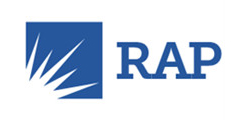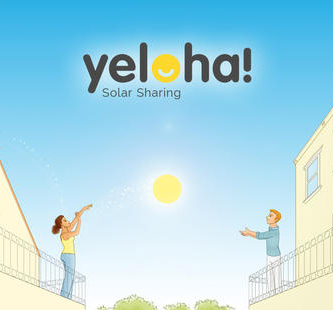
On January 25, 2016, a lucidly written majority opinion from the U.S. Supreme Court upheld the Federal Energy Regulatory Commission’s (FERC) jurisdictional authority in its demand response rule (FERC Order 745), illuminating along the way just how quickly energy markets are changing the U.S. grid.
The significance of the ruling has multiple dimensions of influence, but foremost it permits consumer energy products and services, in this case demand response, to participate in wholesale energy markets and receive payments at a level equal to traditional energy generators.
Demand response – or the process of compensating customers for reducing their electricity use – provides one of the most promising uses for batteries, advanced power electronics, and other emerging technologies that seamlessly shift energy load off the grid and ease peak congestion. Demand response companies, for example, currently sell software that helps the business or consumer manage their use of electricity. Some people refer to this product as creating “negawatts” – giving value to not using electricity when the price is higher. Aggregation companies then sell these “negawatts” in auctions where Regional Transmission Organizations (RTOs) are constantly matching supply with demand and where demand response is offered into the wholesale market at the same price as energy generation. The consequences of this integration into the market are significant – the wholesale energy market region operator PJM Interconnection estimates that demand response tools and sales saved consumers as much as $12 billion annually.
The Supreme Court case came about, however, because the Electric Power Supply (EPSA) challenged FERC’s role in setting the payments for demand response services at parity with energy generation. In a ruling on EPSA v. FERC, the United States Court of Appeals for the District of Columbia Circuit held that FERC’s pricing in the rule was arbitrary and capricious and further stated that FERC had no authority to regulate demand response (this, the court argued, was because regulating demand response crossed into regulating retail electric markets, which is the jurisdiction of the state).
After the case’s appeal to the U.S. Supreme Court, that ruling was overturned, with the high court ruling in favor of FERC on 6-to-2 decision. Justice Elena Kagan penned the majority opinion, stating that the Federal Power Act “provides FERC with the authority to regulate wholesale market operators’ compensation of demand response bids”. This new ruling provides a protective legal precedent for distributed energy resources such as demand response tools (and, eventually, energy storage systems) to contribute significantly in the balance of energy supply and demand management. The case also affirms the RTOs’ role in the wholesale market and gives FERC greater latitude in its regulatory authority of these markets. And finally the case demonstrates that innovative new technology and services, such as demand response and energy storage (and, significantly, the markets in which they will play a role) will allow consumers to play a key role in managing supply and demand and, as a result, in reshaping our energy future.
More broadly speaking, the court ruling may also foreshadow the changing roles of the federal government, states and regional authorities in operating the electrical grid. The court’s ruling, for example, may impact FERC’s role in regulations affecting capacity requirements, resource adequacy, environmental controls, transmission planning, reliability planning, and non-traditional market participants.
While it’s difficult to know how exactly this court ruling may apply to other energy market factors, the bottom line is this: balancing supply and demand saves money for energy users, and creates new opportunities for utilities to make a much more efficient electrical grid. In other words, people and markets are now being empowered in ways that are still being defined.
A Stretch Goal for Energy Efficiency

Energy efficiency measures are the most cost effective method for managing energy demand. A new report from the Regulatory Assistance Project (RAP), “The Next Quantum Leap in Efficiency: 30 Percent Electric Savings in Ten Years,” points to the potential for smarter, more aggressive uses of energy efficiency across the U.S. The report’s first notable finding is that successful energy efficiency programs in the states of Rhode Island and Massachusetts were tied to “both states endeavor[ing] to treat efficiency as a resource that should be acquired whenever it is less expensive than supply alternatives.” A second key finding – that it helps to really want incentivized energy efficiency – might seem obvious, but it’s often overlooked by state policymakers and energy regulators who compromise the success of their efforts by capping program budgets. In fact, the report points to several key measures in energy efficiency programming that fail to boost energy efficiency, including those that:
- "fail to address utility profitability concerns;
- over-reward short-term savings;
- artificially cap efficiency program spending;
- limit investments in market transformation efforts;
- and discourage innovation and appropriate levels of risk taking."
The RAP report also suggests new market concepts for efficiency, including pushing incentives to retailers versus a utility pushing just a few products, and looking at ways to aggregate energy efficiency savings and sell them in the energy marketplace.
Energy Trading: Coming to a Marketplace Near You?

The development of new energy trading platforms in the U.S. and around the globe is pretty strong evidence that energy markets are changing. Some powerful examples: Yeloha, a peer-to-peer Solar Sharing Network, has formed a partnership with Green Mountain Power of Vermont. According to company materials, Yeloha has two sets of customers. “Sun hosts” are those who will have solar panels installed on their roof, keep about a third of the electricity and provide the rest to the company. “Sun partners” are those who do not have the correct roof for solar, but want to buy solar credits. Yeloha helps partners and hosts to find and choose each other, with everyone involved having access to online tools that measure production and consumption.
In Germany, the battery supplier Sonnenbatterie has launched another energy trading platform called, sonneCommunity. Customers with solar panels and/or battery storage systems have access to a digital software platform (with real-time energy usage data and weather conditions information) to assist them in making energy transactions and balancing supply and demand.
In the Netherlands, according to Navigant Research, a trading platform operated by Vandebron has over 38,000 subscribers linked to distributed energy resource (DER) technologies, and allows for price to be a market exchange mechanism. While this flexible energy generation model is still very much at the small-scale stage, it opens the door to greater changes and more flexibility for customers on the supply side/generation side.

